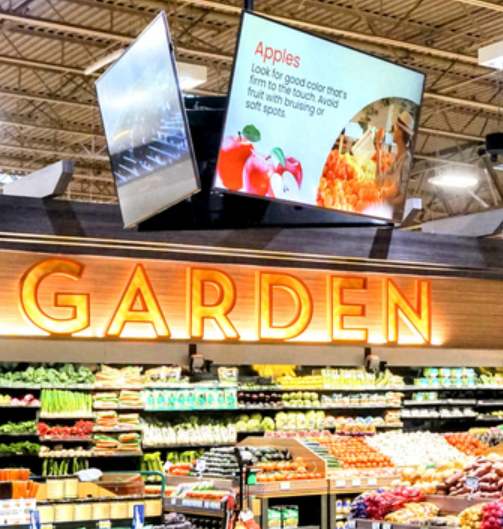The $150 billion retail media industry is booming, and digital signage at the point of sale is where many retailers are hoping to rake in revenue. A whopping 80% of retailers are using digital signage today to enhance in-store experiences and drive conversions, according to Digital Signage Today.
But is digital signage actually driving sales at checkout? A landmark peer-reviewed field study set to be published by the Journal of Marketing answers that question with a resounding yes. One of the largest-ever studies of the impact of in-store digital signage, the findings by researchers at Vrije Universiteit Amsterdam (VU Amsterdam) and Babson College leverage data spanning 237 advertising campaigns and 30 million shoppers.
Not only did the study’s researchers uncover empirical data that digital ads boost sales conversion, they also quantified where, when and how the ads deliver the greatest ROI. Among the study’s key findings are:
- Digital signage boosts the purchase likelihood of featured products by 8.1%.
- The likelihood effect is higher for new and low-priced products, as well as for popular brands.
- Point-of-sale ads yield the biggest conversion on weekends, in late afternoon and evening, during good weather, and in crowded stores.
“The big takeaway is that quality in-store digital works,” says Chuck Billups, Global Head of Retail Media Advertising at PRN, part of the STRATACACHE family of advanced marketing technology companies and a global leader in interactive, intelligent shopper engagement experiences.
In fact, Chuck notes that the 8.1% sales boost statistic may be too low when in-store ads are effectively deployed. “In studies in the U.S., we find much higher relative purchase intent and reported purchase behavior in shoppers exposed to in-store advertising,” he noted. “They range from low double digits to even a few above a two times relative difference.”
A Halo Effect Beyond POS
Perhaps the study’s most impactful insights is that digital signage not only shifts point-of-sale purchases—it stimulates incremental consumption for a brand beyond featured products at the checkout counter. Simply put, shoppers exposed to in-store digital ads are more inclined to purchase the brand’s other products during the same trip.
According to the study, digital signage yields an advertising elasticity (meaning, the percentage change in a brand’s sales due to a 1% change in the brand’s digital signage investment) of 0.18—which is 50% higher than benchmark brand advertising elasticities—and it could lead to an average gross ROI in digital signage of 21%.
That halo effect could move the needle as brands formulate their retail media strategies. “We are seeing renewed emphasis on Marketing Mix Modeling of all spends,” Chuck explains. “Incremental sales and Incremental Return on Ad Spend (iROAS) are becoming the arbiters. Think of a pack of mints—will 8.1% justify an ad buy? The penny profit may be too low, but the iROAS may make it worth it.”
Actionable Insights for Brands and Retailers
For retailers, the study’s findings on incremental spending could inform ad pricing strategies and inventory optimization.In the next few years, Chuck predicts, iROAS will be a required input to inform pricing strategies. Retailers can leverage these insights to price platforms close to a featured product with high movement and profit at a higher rate.
And retailers can mine the study’s findings to optimize their overall in-store digital signage strategy. “Place it closer to the product instead of outside the front door,” says Chuck. “Focus on high impact locations. Design the digital surfaces to be native and eye level.”
But it’s not just about the location of the ad. To go beyond the 8.1% boost that the data reveals—and to soar potentially far beyond it—retailers and brands need to make the in-store digital experience engaging and delightful. “Put your creative strategy first instead of last, and use creative that works in the store on both branding and conversion levels,” Chuck advises. “The returns are well worth the effort.”














